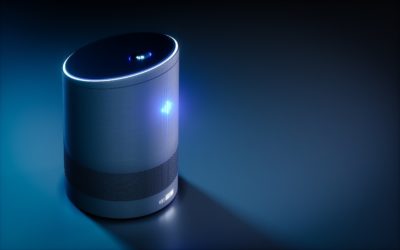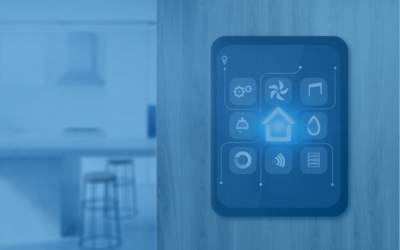Miniaturization of IoT
More battery life and smaller IoT devices are resulting in optimized performance, and our team is excited to partner and lead.
In this digital era, as we wirelessly connect more and more devices to the Internet, researchers and engineers face several challenges, like how to package a radio transmitter into their existing device real estate, how to make increasingly smaller devices, how to reduce the area coverage for mounting chips. They are also striving to meet consumer demand for Internet of Things (IoT) products that are ergonomically easy to use.
Ideally, engineers would tend to use IoT components that are smaller in size, have better RF performance, and have reasonable prices. However, these characteristics do not usually converge in IoT component offerings, and that presents a challenge for solution providers.
Fortunately, the size of a silicon die has been getting smaller and smaller over the years as the industry adopts new silicon manufacturing processes. The industry has been solving the space issue for IoT implementations by combining the MCU and RF frontend into system-on-chip (SoC) configurations.
The demand for embedded SIM (eSIM) is steadily rising among the smartphone manufacturers, laptop manufacturers, energy & utility sector companies. The OEMs across the globe are focusing on the development and integration of eSIM in numerous applications.
The increasing demand for miniaturization of IoT components across various industries is also boosting the demand for eSIM globally.
In 2018, researchers from the Green IC group at the National University of Singapore (NUS) in collaboration with associate professor Paolo Crovetti from the Polytechnic University of Turin in Italy created the timer, that trigger sensor to perform their tasks when required, is believed to be so efficient that it runs using an on-chip solar cell with a diameter close to that of a human hair. This is a major step in IoT miniaturization claimed with low-power.
The wake-up timer can continue operations even when a battery is not available and with very little ambient power, as demonstrated by a miniaturized on-chip solar cell exposed to moonlight. An on-chip capacitor used for slow and infrequent wake-up also helps reduce the device’s silicon manufacturing cost thanks to its small surface area of 49 microns on both sides.
IoT sensor nodes are individual miniaturized systems containing one or more sensors, as well as circuits for data processing, wireless communication, and power management. To keep power consumption low, they are kept in sleep mode most of the time, and wake-up timers are used to trigger the sensors to carry out a task. As they are turned on most of the time, wake-up timers set the minimum power consumption of IoT sensor nodes. They also play a fundamental role in reducing the average power consumption of systems-on-chip.
When designing a hardware module, one of the pressing questions is about Antenna. Developers must work around the space reserved for antenna and the type of antenna they will use to integrate with a corresponding module. PCB trace antennas are general preference because of their low bill of material (BoM) costs. But they require a significant size which can cause devices to be large and difficult to work with.
The smaller size we try to achieve, the less efficiency we can have for the RF performance. Chip antennas are famous for various applications as they simplify design efforts and optimize size consumption.
According to statistics of Bluegiga, approximately only 10 percent of these evaluated designs deploy the external antenna, and 90 percent of the customers choose modules with a built-in chip antenna. Hence, it becomes necessary to continuously evaluate the possibility of space reduction on chipboard, something Cloud of Things has successfully achieved with our latest DeviceTone Genie product line, working with great partners including Nordic Semiconductor and AES with their minIot devices.
Stay tuned for more information on how Cloud of Things and our DeviceTone engineers are working with our partner ecosystem to continually advance smaller form factors with powerful capabilities.
Similar Blogs
Cloud of Things joins the Tondo-Smart group, a leading public smart-city vendor
Ultra-Low Energy (ULE), an extension of the Digital Enhanced Cordless Telecommunications (DECT) physical layer specification that supports low power devices, is becoming an increasingly popular approach, promoted by the ULE Alliance as “a way to provide sensors, actuators and other smart devices in the Internet of Things (IoT) with two-way transmission capability over a dedicated frequency band of 1900MHz.”
DSP Group and Cloud of Things Combine Forces and Introduce a Fully Managed ULE IoT Cloud Services Gateway
Ultra-Low Energy (ULE), an extension of the Digital Enhanced Cordless Telecommunications (DECT) physical layer specification that supports low power devices, is becoming an increasingly popular approach, promoted by the ULE Alliance as “a way to provide sensors, actuators and other smart devices in the Internet of Things (IoT) with two-way transmission capability over a dedicated frequency band of 1900MHz.”
As Smart Home Solution Adoption Explodes, Service Providers Seek Simplicity and Scale
The collapse of the housing market in North America in 2008, driven in large part by the near-collapse of the economy, is now in the rearview mirror. The market today is healthy and evolving, responding to the impact of COVID-19 in America’s largest cities, which is driving up the prices of luxury homes in the suburbs and more affordable housing for those looking to leave small, cramped apartments and work remotely from larger, affordable apartments as remote working becomes more acceptable to certain businesses.


